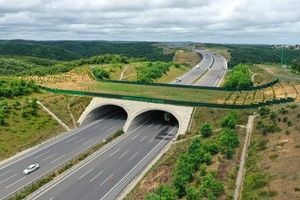The Campi Flegrei region, renowned for its volcanic nature, has unveiled fascinating discoveries about its past eruptions, thanks to recent research conducted by Italian scientists. This region, which is often associated with mythology as one of the entrances to the underworld, has now been shown to have experienced powerful volcanic events much earlier than previously thought.
According to researchers from CNR-IGAG, Sapienza University of Rome, INGV, and the University of Bari Aldo Moro, the reconstruction of volcanic activity has pushed back the timeline of known eruptions. Their findings reveal the occurrence of the Maddaloni eruption, estimated to have taken place 109,000 years ago, which significantly predates the previously recognized events.
Historically, the volcanic activity of Campi Flegrei has been documented mainly for the last 40,000 years. Still, the study published in the journal Communications Earth and Environment of Nature shows just how much more there is to learn about this intriguing volcanic system.
Jacopo Natale from the University of Bari, one of the study’s authors, emphasizes the remarkable complexity of the caldera’s structure. He mentioned, "The findings suggest the caldera's formation, which occurs during substantial eruptions following the release of large magma volumes, might be much more complicated than previously hypothesized." This complexity presents important implications for assessing the region's volcanic hazards.
Just recently, the Campi Flegrei area experienced another earthquake, registering 3.0 on the Richter scale. While these seismic activities have caused concern among local residents, they are nothing compared to the cataclysmic events studied by geology experts, particularly the destruction wrought by the Maddaloni eruption. This volcanic event has been rated with a magnitude of 7.6, making it slightly less violent than the historic Ignimbrite Campana eruption approximately 40,000 years ago.
Gianluca Sottili and Giada Fernandez, other researchers involved, explain the importance of reconstructing the volcanic history. They say, "Reconstructing the entire volcanic history of Campi Flegrei is key to highlighting fundamental parameters for defining its danger, such as the frequency and magnitude of eruptive events." Deposits of ash from ancient eruptions found far from the volcano allow scientists to extend their studies back in time, creating more comprehensive volcanic histories.
Notably, scientific advances have enabled the researchers to decode the signals left by historical eruptions. Biagio Giaccio from CNR-IGAG noted, "Similar to how fingerprints or DNA identify individuals, specific stratigraphic, chemical, and chronological characteristics of ash layers found in marine or lake sediments can identify the volcanic source and, on occasion, the precise eruptive event responsible for the ash."
The researchers gathered ash samples from various locations ranging from Sulmona to Palinuro, employing sophisticated models of ash dispersion to reconstruct the dynamics and magnitude of the Maddaloni eruption. Antonio Costa from INGV reported, "We derived estimates for several key parameters, like the erupted magma volume and the height of the ash and gas plume. This work identifies the Maddaloni eruption as the second-largest event recorded at Campi Flegrei to date."
The study reinforces the notion of the potential threat posed by the Campi Flegrei caldera. Despite being one of the most studied volcanic complexes worldwide, the inherent risks it presents are multifaceted, requiring constant monitoring and research. The geological records suggest numerous significant eruptions throughout this volcano’s history, which indicates the necessity for enhanced investigations to effectively evaluate its potential hazards.
While geological evidence of older activities lies buried deep beneath modern volcanic deposits, the Campi Flegrei area remains densely populated. The combination of urban development and latent volcanic danger necessitates rigorous scientific inquiry to safeguard the millions who live nearby. It seems the more we learn about the Campi Flegrei, the more we discover the ambiguities hidden beneath its fiery past.
With each academic endeavor shedding more light on the ancient eruptions, the story of the Campi Flegrei continues to evolve. This latest research amplifies calls for vigilance and preparedness for potential future volcanic activity, ensuring the local communities are equipped with the knowledge to respond effectively should the ground beneath their feet rumble once more.



